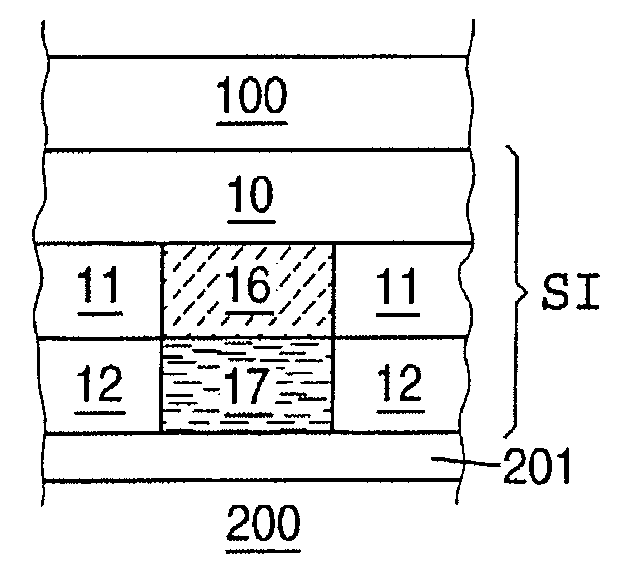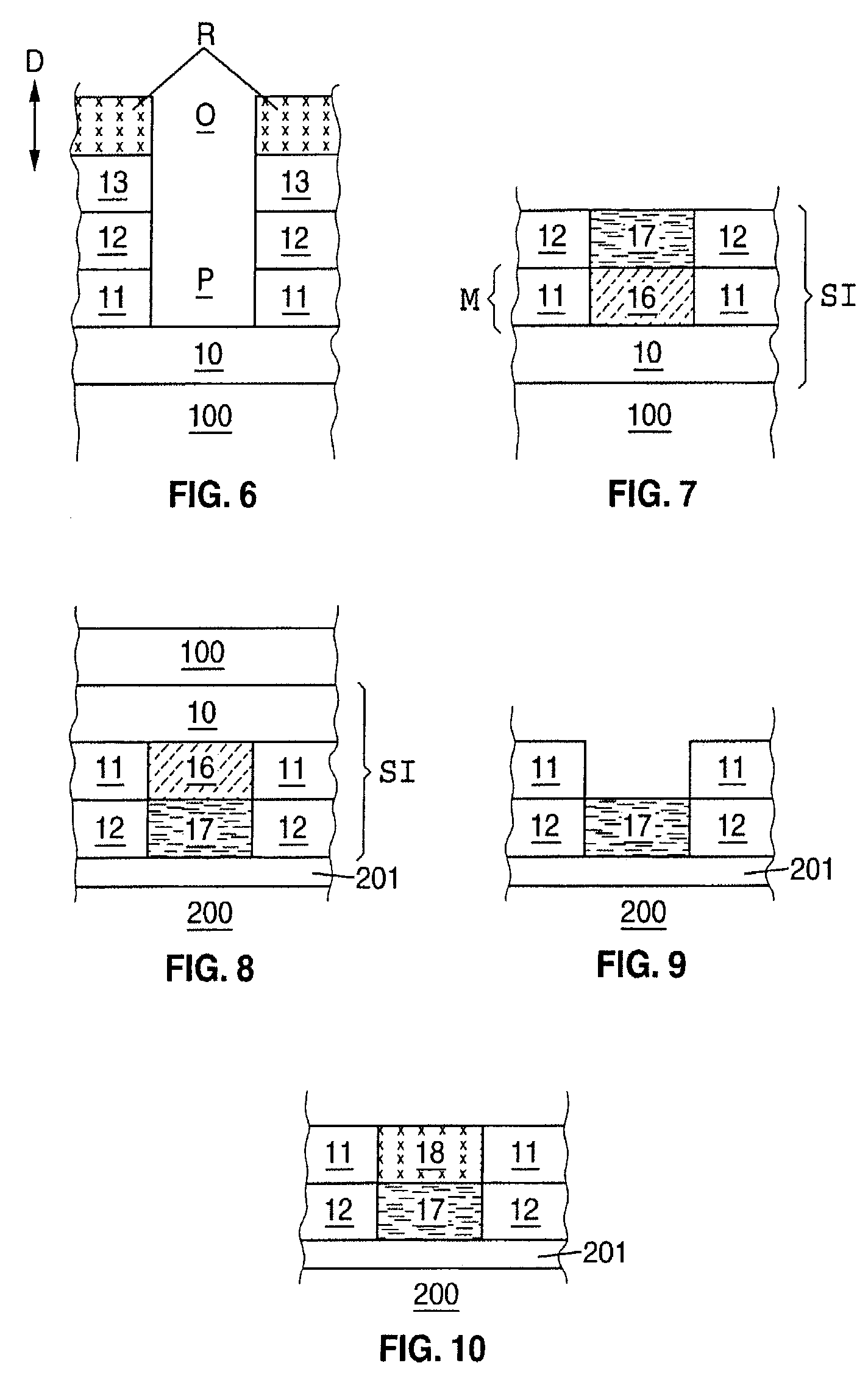Electronic components and method of fabricating the same
- Summary
- Abstract
- Description
- Claims
- Application Information
AI Technical Summary
Benefits of technology
Problems solved by technology
Method used
Image
Examples
second embodiment
[0047]The production of a diode will now be described as the method of the present invention. The starting configuration is again the silicon substrate 100 covered with the layers 10–13 enumerated in the previous example, and with the resin mask R having the aperture O (FIG. 1). In this embodiment, the layer 11 is made of polycrystalline silicon. Optionally, a commercial SOI (silicon-on-insulator) substrate may be used, which includes a silicon base 100, the silica layer 10 and the upper silicon layer 11. Dry etching is carried out so as to hollow out, via the aperture O, a well P through the layer 13, the layer 12 and the layer 11 in succession along the direction D.
[0048]This etching is preferably carried out by successively exposing the structure of FIG. 1 to a plasma containing a gas such as sulfur hexafluoride (SF6) or hydrogen chloride (HCl) capable of etching the polycrystalline silicon, and then to a plasma containing a gas such as C4F8 capable of etching the silica. The sil...
first embodiment
[0051]In the same way as in the first embodiment, the substrate 100 with the initial structure SI is then inverted and applied against the surface of a second substrate 200 covered with a silica layer 201. The surfaces of the layer 12 and of the volume 17 on the side opposite to the substrate 100 are thus brought into contact with that surface of the silica layer 201 which is on the side opposite to the substrate 200 (FIG. 8). In addition, the substrate 100 and the layer 10 are then removed, so as to expose those surfaces of the crystalline silicon layer 11 and of the volume 16 of silicon-germanium alloy that are on the opposite side to the substrate 200.
[0052]The selective treatment applied for this purpose at these exposed surfaces is preferably a selective wet etching treatment of the silicon-germanium alloy. Such selective etching uses, for example, an aqueous oxidizing solution composed of 40 milliliters of 70% nitric acid (HNO3), 20 milliliters of hydrogen peroxide (H2O2) and ...
third embodiment
[0054]the method of the present invention relates to the production of an MOS transistor having two gates placed on either side of a conduction channel. As is known, this type of transistor allows the current flowing in the channel to be controlled particularly precisely by the electrical potential applied to the gates. To do this, the two gates must be placed symmetrically with respect to the channel, by being correctly aligned with respect to each other, and with good reproducibility so as to reduce any dispersion in the electrical properties of the fabricated transistors.
[0055]The various process steps involved in the production of the transistor will not all be described in detail because their respective methods of implementation are well known. Only the chronological sequence according to the third embodiment of the present invention will be described.
[0056]FIG. 11 shows a crystalline silicon substrate 100 covered, in an order corresponding to the stack of the layers from the ...
PUM
| Property | Measurement | Unit |
|---|---|---|
| Structure | aaaaa | aaaaa |
| Volume | aaaaa | aaaaa |
Abstract
Description
Claims
Application Information
 Login to View More
Login to View More - R&D Engineer
- R&D Manager
- IP Professional
- Industry Leading Data Capabilities
- Powerful AI technology
- Patent DNA Extraction
Browse by: Latest US Patents, China's latest patents, Technical Efficacy Thesaurus, Application Domain, Technology Topic, Popular Technical Reports.
© 2024 PatSnap. All rights reserved.Legal|Privacy policy|Modern Slavery Act Transparency Statement|Sitemap|About US| Contact US: help@patsnap.com










